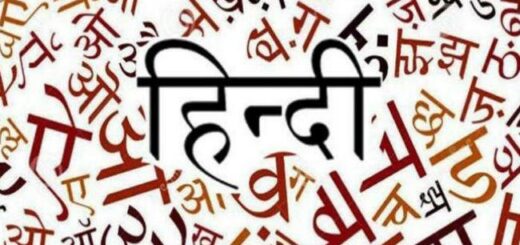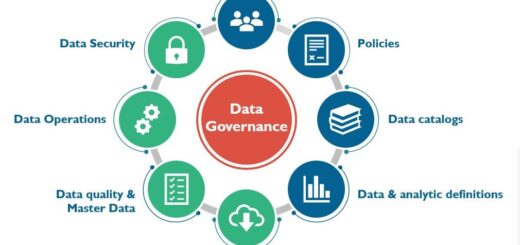National Current Affairs – UPSC/KAS Exams- 18th February 2020
Topic: Polity and Governance
In News: There are many legal and social difficulties involved in the Supreme Court’s move to take suo motu cognisance of children taking part in demonstrations in Shaheen Bagh in Delhi.
Views Supporting Children’s Right to Protest:
- Implicit in the freedom of speech and the freedom to assemble peaceably and without arms under Article 19 of the Constitution is the right to protest. This right is guaranteed to all citizens of India regardless of age.
- The United Nations Convention on the Rights of the Child (CRC), which India has ratified, expressly recognises in Article 13 that freedom of expression of the child.
- Both the Indian Constitution and the CRC state that no restriction may be placed on these freedoms except those that are necessary and imposed by statute for the “purposes of safeguarding the sovereignty, integrity and security of the state, friendly relations with foreign states, public order, decency or morality or in relation to contempt of court, defamation or incitement to an offence”.
- Even these restrictions must pass the test of reasonableness as understood by the constitutional courts. As such, neither the Constitution nor the CRC contemplate a blanket restriction being imposed on children’s right to protest by a court directive.
- While many schools encourage children to read newspapers and watch news channels, attending a protest is also a way for children to receive information and ideas.
- At a protest they get to witness expressions of discontent against acts or omissions of the government that have prejudicial and even violent impacts on people’s lives.
- A protest is also a space where children get to experience and assert citizenship. It’s a space for them to comprehend what ‘We The People of India’ encompasses; it is where they get to see people from all walks of life. It could also be a space for children to celebrate their unity as Indians.
Views Against the participation of Children:
- Children may experience trauma during protests and this may affect their emotional wellbeing.
- When children at very young age are exposed to polarised views, especially on caste, class or religion, it becomes deeply embedded in their minds and could be there for life.
Conclusion:
- According to the Convention on the Rights of the Child, children and adolescents have the right to participate and express their opinions on issues that affect them.
- The State, local communities and families have a shared responsibility to protect children and safeguard their rights through the promotion of tolerance, respect and peaceful conflict resolution.
- UNICEF urges the leaders, conveners and participants in public demonstrations to make these events peaceful and, together with families, guide children and adolescents to avoid exposure to dangerous situations.
- The national child protection system should redouble its efforts to effectively ensure the protection of children and the dissemination of children’s rights among all actors involved in the demonstrations.
Source: Hindu
India’s birds suffering dramatic population declines
Topic: Environment and Ecology
In News: According to The State of India’s Birds 2020 (SoIB) assessment over a fifth of India’s bird diversity, ranging from the Short-toed Snake Eagle to the Sirkeer Malkoha, has suffered strong long-term declines over a 25-year period, while more recent annual trends point to a drastic 80% loss among several common birds.
More on the Topic:
- Cause of Decline: Several spectacular birds, many of them endemic to the sub-continent, face a growing threat from loss of habitat due to human activity, widespread presence of toxins including pesticides, hunting and trapping for the pet trade.
- Diminishing population sizes of many birds because of one factor brings them closer to extinction because of the accelerated effects of others.
- Statistics: Of 101 species categorised as being of High Conservation Concern, 59 based on range and abundance and the rest included from high-risk birds on the IUCN Red List — endemics such as the Rufous-fronted Prinia, Nilgiri Thrush, Nilgiri Pipit and Indian vulture were confirmed as suffering current decline, and all except 13 had a restricted or highly restricted range, indicating greater vulnerability to man-made threats.
- Among widely known species, the common sparrow, long seen as declining in urban spaces, has a stable population overall, although the data from major cities confirm the view that they have become rare in cities and urban areas.
- Among the possible reasons for this is a decrease in insect populations as well as nesting places.
- Peafowl, on the other hand, are rising in numbers.
- One of India’s major conservation concerns, the Great Indian Bustard (GIB), is being brought back from the brink.
- Migratory shorebirds, along with gulls and terns, seem to have declined the most among waterbirds.
- From a dietary viewpoint, meat-eater populations have fallen by half, and birds that depend on insects exclusively have also suffered over the long term.
Source: Hindu
Topic: e-Governance
In News: The Ministry of Minority Affairs has informed that India has made the Haj 2020 process completely digital.
More on the topic:
- E-MASIHA (E-Medical Assistance System for Indian Pilgrims Abroad) is an online system to create and maintain the complete health database of Indian pilgrims.
- It also provides doctors’ prescriptions, medical treatment as well as medicine disbursals, and has been developed to deal with any emergency in Makkah-Madinah.
- India has become the first country in the world which has made the entire Haj 2020 process 100% digital.
- The online facilities include application procedure, E-Visa, Haj mobile app, “E-MASIHA” health facility and “E-luggage pre-tagging” providing all information in India itself regarding accommodation/transportation in Makkah-Madinah, Saudi Arabia.
Source: Hindu
Topic: Culture
In News: Through mobile radio, the Asur community is spreading the popularity of the language within their geographical limits.
More on the Topic:
- Asur is among the nine Particularly Vulnerable Tribal Groups found in Jharkhand.
- Of the 32 different tribes recorded in the State, only four to five tribes, including Santhali, Ho and Kuruk, have recorded language scripts.
- In the community, 50% of population could barely speak in Asur language; they are not fluent in the language.
- The Asur language figures in the list of UNESCO Interactive Atlas of the World’s Languages in Danger.
- Only 7,000 to 8,000 Asur tribals are left in the community who are well conversant in the language.
- With help from tribal rights activists, Asur Tribal Wisdom Centre, an organization involving Asur tribals, was established at Jobhipat village near Netarhat to protect the language and culture of Asur tribals.
| · In 1975, the Government of India initiated to identify the most vulnerable tribal groups as a separate category called PVTGs and declared 52 such groups.
Characteristics of PVGT’s · PVTGs have declining or stagnant population, · Low level of literacy, · Pre-agricultural level of technology, · Economically backward. · Generally inhabit remote localities having poor infrastructure and administrative support. |
Source: The Hindu
Topic: Polity and Governance
In News: Guwahati, the largest city in the Northeast, has yielded a new species of lizard – the urban bent-toed gecko.
More on the Topic:
- The new species of lizard, zoologically named Cyrtodactylus urbanus, is markedly different in molecular structure, blotch and colour from the Cyrtodactylus guwahatiensis, or the Guwahati bent-toed gecko, that was discovered two years ago.
- It was also the 12th recorded gecko from the Northeast.
| Guwahati is home to 26 species of amphibians, 57 species of reptiles, 214 species of birds and 36 species of mammals. The city provides that edge for urban biodiversity to thrive because it encompasses 18 hills, eight reserve forests, two wildlife sanctuaries and a Ramsar site (wetland) besides the Brahmaputra river. |
Source: Hindu
Topic: Government Policies
In News: SUTRA PIC programme was launched by the government to research on ‘indigenous’ cows.
More on the Topic:
- SUTRA PIC stands for Scientific Utilization Through Research Augmentation-Prime Products from Indigenous Cows.
- To be funded by multiple scientific ministries, the initiative, SUTRA PIC, is led by the Department of Science and Technology (DST).
- It has the Department of Biotechnology, the CSIR, the Ministry for AYUSH (Ayurveda, Unani, Siddha, Homoeopathy) among others and the Indian Council of Medical Research as partners.
It has five themes:
- Uniqueness of Indigenous Cows,
- Prime-products from Indigenous Cows for Medicine and Health,
- Prime-products from Indigenous Cows for Agricultural Applications,
- Prime-products from Indigenous Cows for Food and Nutrition,
- Prime-products from indigenous cows-based utility items
The proposals under this theme aim to:
- Perform scientific research on the complete characterization of milk and milk products derived from Indian indigenous cows;
- Scientific research on nutritional and therapeutic properties of curd and ghee prepared from indigenous breeds of cows by traditional methods;
- Development of standards for traditionally processed dairy products of Indian-origin cow.
Source: PIB



















